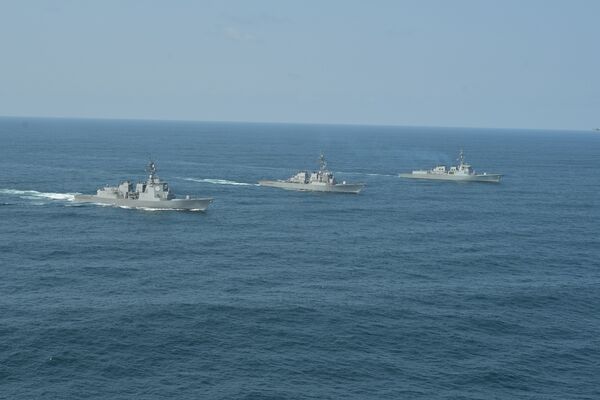
JS Atago, USS Benfold, and ROKS Yulgok Yi seen here conducting a trilateral BMD exercise in the Sea of Japan. (JMSDF)
Japan's Aegis-equipped destroyers that are presently deployed for ballistic missile defence (BMD) duties will revert to air-defence roles once the country operates dedicated BMD vessels.
This is according to information provided by the Japanese Ministry of Defense's (MoD's) press office in response to questions from Janes on the country's future sea-based BMD capabilities.
The Japan Maritime Self-Defense Force (JMSDF) currently operates a fleet of eight Aegis-equipped destroyers. These vessels, which are namely two Maya-class, two Atago-class, and four Kongou-class destroyers, were originally meant to provide the JMSDF fleet with area-wide air-defence capabilities.
All eight vessels are equipped with the Aegis Baseline J7 configuration, which is similar to the Baseline 9 configuration found on US Navy (USN) warships such as the Arleigh Burke class. The JMSDF destroyers are equipped with sensors such as the SPY-1D(V) air search radar.
However, in recent years, the eight warships have been assigned for BMD operations instead of fleet air-defence operations, given the increasing number of ballistic missile tests conducted by North Korea, said the Japanese MoD. A number of these tests have resulted in missiles splashing down within waters claimed by Japan as part of its exclusive economic zone (EEZ).
The most recent incident took place on 15 June, when North Korea fired two ballistic missiles that splashed down about 135 n miles northwest of Japan's Hegura Island.
Looking to read the full article?
Gain unlimited access to Janes news and more...







